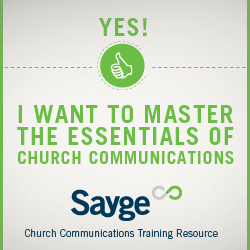
Why would, say, a Southern Baptist church follow the Christian Year – especially a Baptist Church that has more 20-something members than members in any other age group? Isn’t the liturgical calendar just for Catholics? Or isn’t it an out-of-date, awkward intrusion on our modern sensibilities?
Our young, Baptist church doesn’t think so, which is why we are always moving in the rhythms of this calendar, from Advent to Pentecost. More and more Christians are rediscovering this historic practice, and growing in the truth and knowledge of Christ. As author Lauren Winner has said:
“I want the Christian story to shape everything I do, even how I reckon time. I want it to be truer and more essential to me than school’s calendar, or Hallmark’s calendar, or the calendar set by the IRS. I want the rhythms of Advent, Christmas, Epiphany, Lent, Easter, Pentecost to be more basic to my life than the days on which my quarterly estimated taxes are due.”
We shouldn’t treat the church calendar as if it were commanded in Scripture, like baptism and communion are commanded. It is simply a practice of historic Christianity that continuously stirs reflection, anticipation and action in the hearts of God’s people for the whole, big story of the gospel.
How To Observe The Christian Year
Here are three resources to introduce you to the Christian Year. The first two will help you plan corporate worship services during each season of the year. The third will help you prepare your church members for moving in the rhythms of the Christian Year during the week:
- The Worship Sourcebook, by the Calvin Institute of Christian Worship (ed. John Witvliet)
- The Services of the Christian Year by Robert E. Webber
- Living The Christian Year: Time to Inhabit the Story of God by Bobby Gross (preface by Lauren Winner, from whence comes the quote by Winner in this blog post, above)
We encourage ministry leaders and all of our community group leaders to lead their people in the rhythms of the Christian Year as well. Many of our community groups have done things like Epiphany Feasts, Easter cookouts and group Advent calendars. Teach your people about the themes of each season. Then let them dream up ways to commemorate these seasons in their groups and families.
Answers To Common Objections
1. Seriously, isn’t this a Catholic thing?
By the 2nd century, Easter was celebrated as a 50-day season. The full Christian Year was developed by the 4th century. As our Worship & Arts Pastor Mike Cosper wrote in Rhythms Of Grace: How The Church’s Worship Tells The Story Of The Gospel,
“To many Protestants, the church calendar may seem like an arbitrary regulation, a testimony to authority and micromanagement from Rome, but for it’s authors, it was designed pastorally. The church calendar was designed to walk believers through the story of the gospel every year, from the incarnation to the ascension. If we allow historic prejudice to color our perspective too heavily, we lose sight of the brilliant, pastoral creativity that shaped some of the church’s inventions.”
Since the Reformation, many church leaders have found the Christian Year to be helpful for their congregations – Baptists, Methodists, Presbyterians and other denominations and movements.
And ironically, the “civil” calendar of 365.2425 days from January to December can be considered a “Catholic” calendar just as much as the Christian Year. This civil calendar, instituted by Pope Gregory XIII in 1582, is officially called the Gregorian Calendar.
2. Aren’t seasons like Advent and Lent too dark, requiring us to plan worship services that treat the cross and resurrection as if these events haven’t already happened, and Christ isn’t already victorious?
We would never live and worship as if Christ hasn’t come, or ask people to refrain from basking in this good, good news! Remember that Christians began worshiping together on Sunday because it is “the Lord’s day” – the day Christ rose from the grave. Every Sunday, regardless of the season, is a “little Easter.”
In fact, the Sundays between Ash Wednesday and Easter are not counted as part of the “40 days of Lent.” We do craft our services with a “Lenten focus” because corporate worship on Sundays should, in part, prepare people for worship Monday – Saturday. But our Sundays always include Communion, and always include celebrations of assurance that Christ has died for our sins and is risen from the grave, seated at the right hand of the Father.
Photo above from Boston Public Library, used via Creative Commons license




